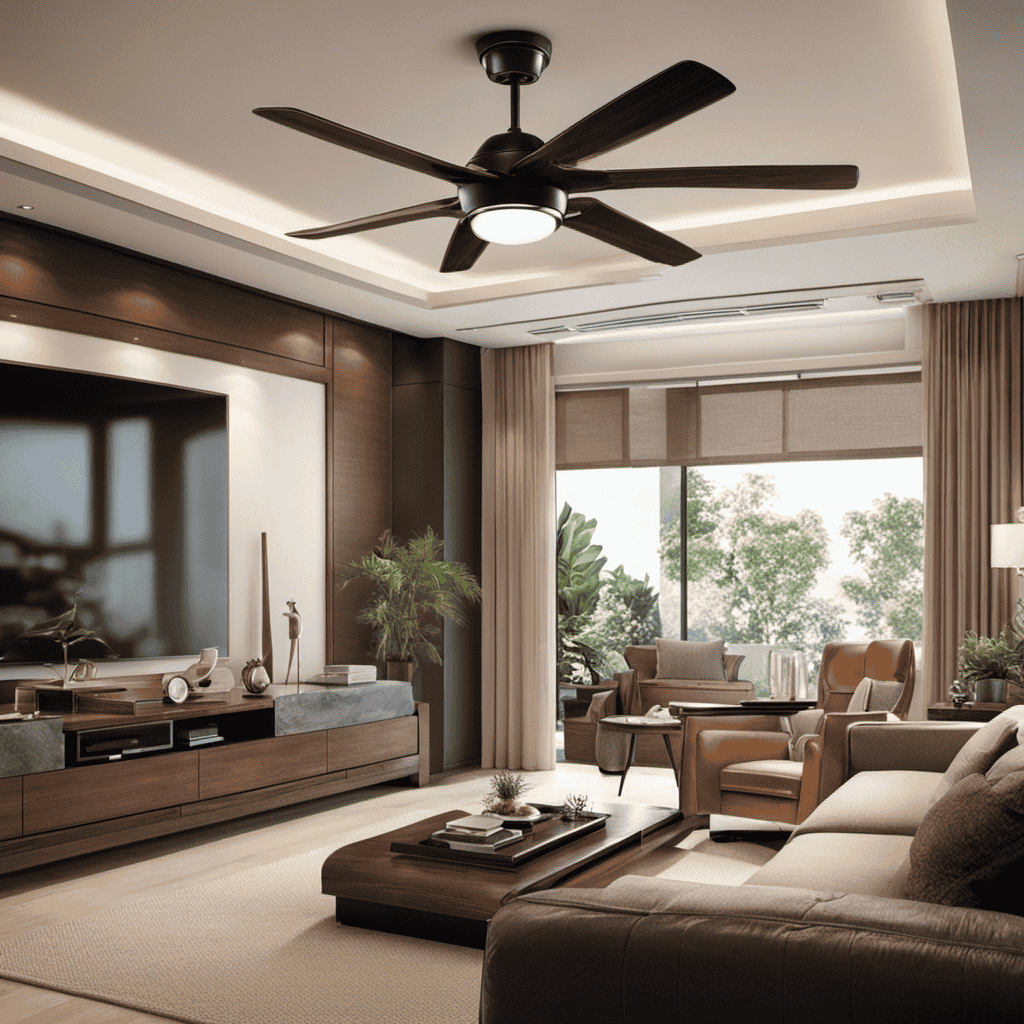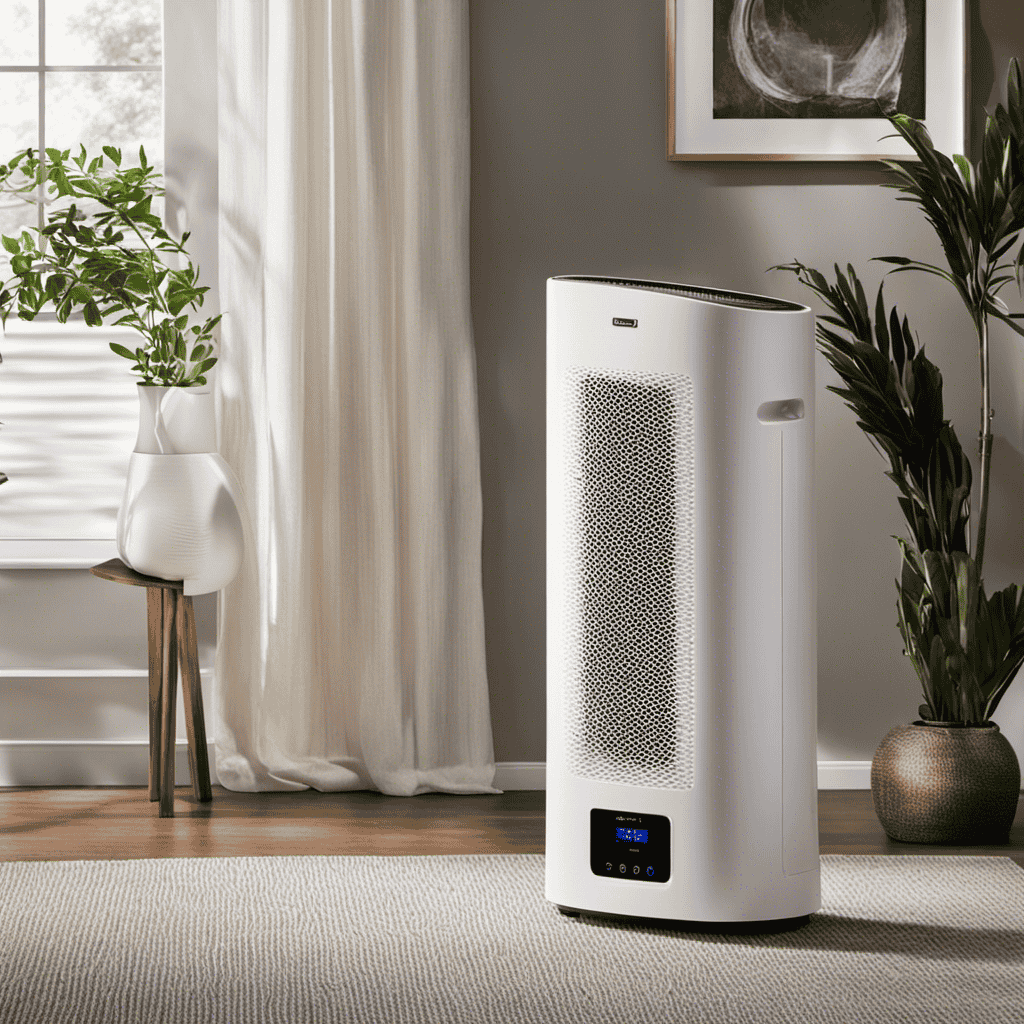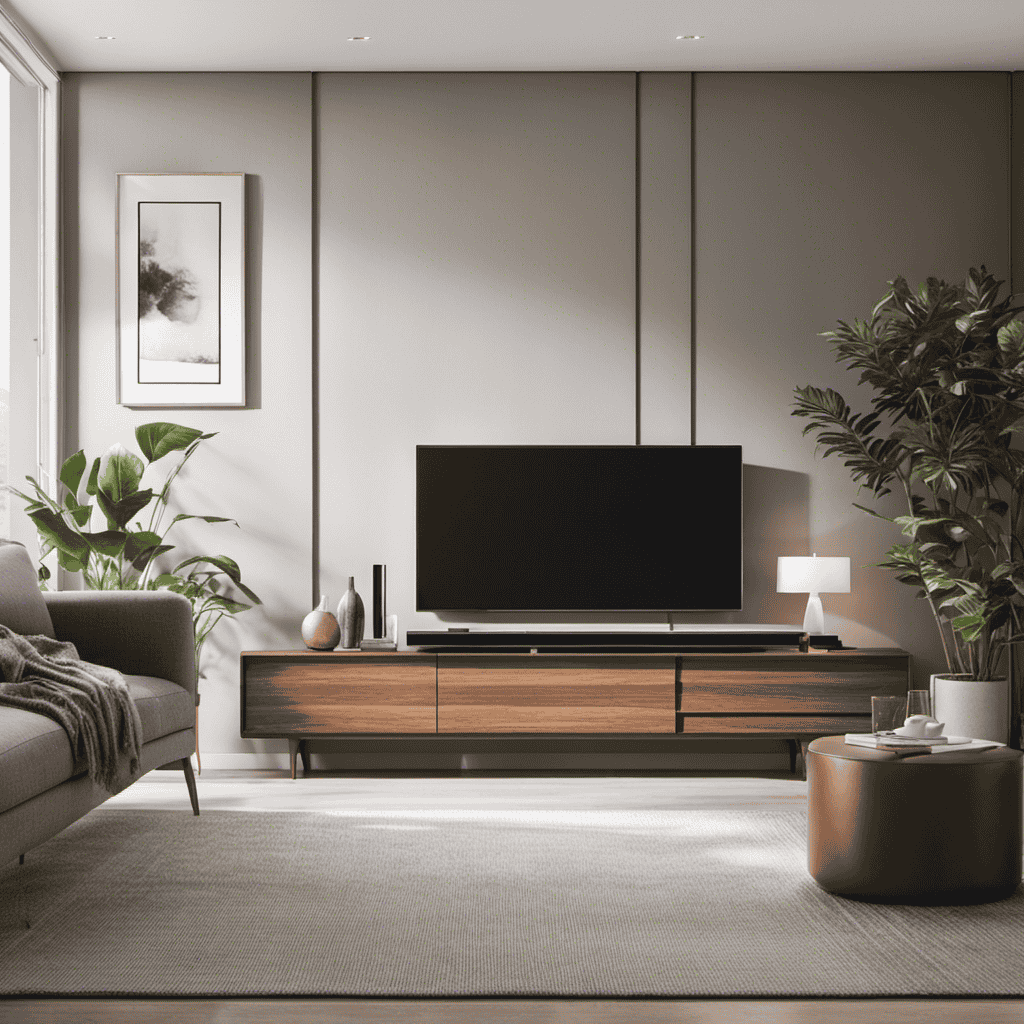Air Purifier Guides
What Does an Air Purifier Do
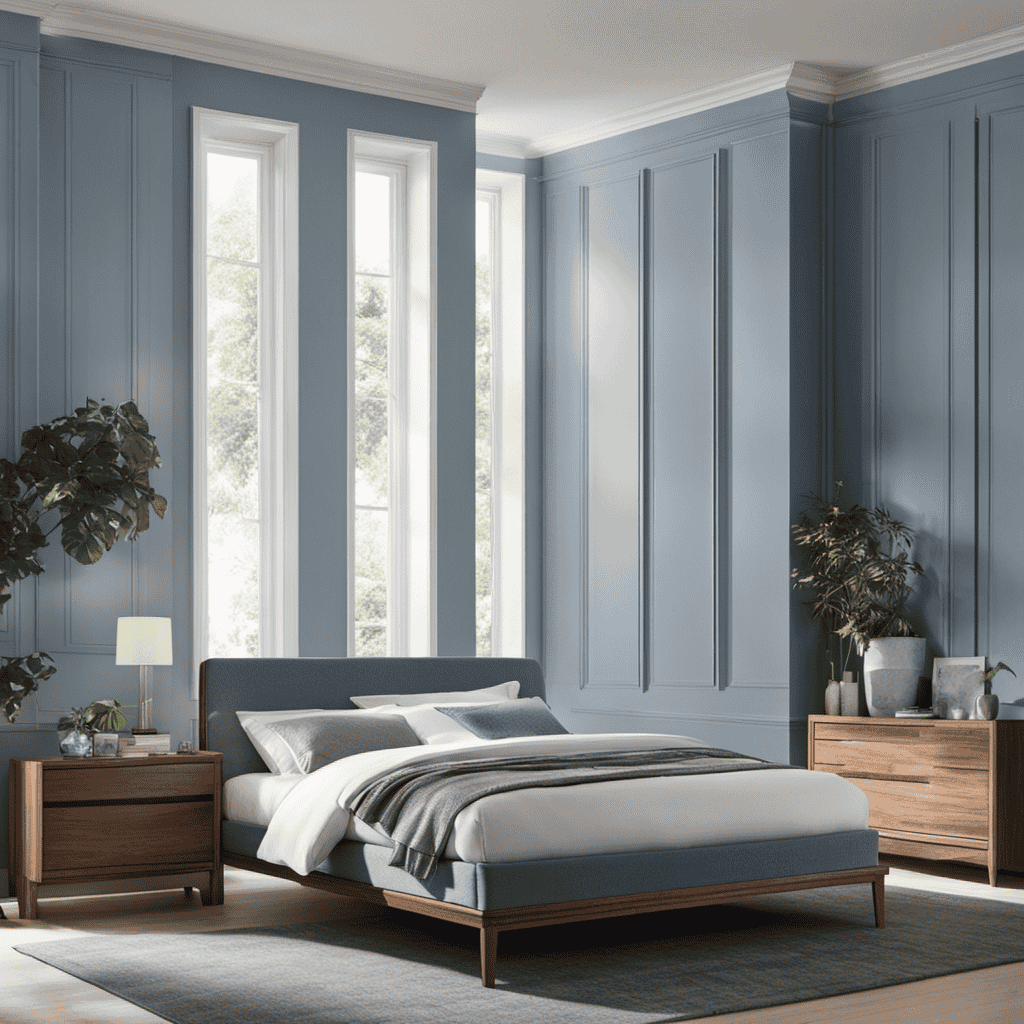
Being someone who deals with allergies, I’m familiar with the challenges that come from indoor air pollutants. This led me to conduct research on air purifiers.
Let me tell you, these devices are life-changing! They work by removing harmful particles from the air, such as dust, pollen, and pet dander. Not only do they improve indoor air quality, but they also help alleviate allergy symptoms.
In this article, we’ll delve into the nitty-gritty details of what an air purifier does and how it can benefit you.
Key Takeaways
- Air purifiers improve indoor air quality by removing pollutants and allergens.
- They use different types of filters such as HEPA filters, activated carbon filters, and electrostatic filters to capture and eliminate contaminants.
- Air purifiers can remove allergens like dust mites, pet dander, pollen, as well as harmful pollutants like VOCs, mold, and tobacco smoke.
- Breathing clean air from air purifiers can prevent respiratory problems, improve sleep quality, and enhance overall health.
The Basics of Air Purifiers
So, let’s talk about what an air purifier actually does.
Air purifiers are devices designed to improve the quality of indoor air by removing pollutants and allergens. They work by drawing in air from the surrounding environment and passing it through various types of air filters. These filters are specifically designed to capture different types of contaminants, such as dust, pollen, pet dander, and even harmful gases.
There are several types of air filters commonly used in air purifiers, including HEPA filters, activated carbon filters, and electrostatic filters. Each filter has its own unique way of trapping and removing particles, ensuring that the air you breathe is clean and healthy.
The benefits of clean air cannot be overstated. It can help reduce allergies, improve respiratory health, and create a more comfortable living environment. Investing in an air purifier can greatly contribute to improving your overall well-being.
Types of Air Pollutants Removed by Air Purifiers
When it comes to indoor air quality, there are a number of common pollutants that can negatively impact our health. These can include allergens like dust mites, pet dander, and pollen, as well as volatile organic compounds (VOCs) emitted from cleaning products, furniture, and building materials.
Common Indoor Pollutants
Common indoor pollutants can be effectively removed by an air purifier. Indoor air pollution is a major concern, as poor indoor air quality can have detrimental effects on our health. The table below provides a visual representation of some common indoor pollutants and their sources:
| Indoor Pollutant | Sources |
|---|---|
| Volatile Organic Compounds (VOCs) | Cleaning products, paints, furniture, carpets |
| Dust and Allergens | Pet dander, pollen, dust mites |
| Mold and Mildew | Damp areas, bathrooms, basements |
| Tobacco Smoke | Smoking indoors |
| Formaldehyde | Insulation, furniture, pressed wood products |
These pollutants can cause a range of health issues, including respiratory problems, allergies, and even long-term effects like cancer. An air purifier helps by filtering out these pollutants and improving indoor air quality. It uses various technologies like HEPA filters, activated carbon filters, and UV light to capture and destroy these harmful particles. By investing in an air purifier, you can ensure a healthier and cleaner indoor environment for you and your family.
Health Benefits of Purification
Investing in an air purifier can greatly improve your health by reducing indoor pollutants and providing cleaner air. Clean air is vital for our overall well-being, as it has numerous benefits for our health.
Breathing in clean air can help prevent respiratory problems such as asthma, allergies, and other respiratory conditions. Additionally, clean air can improve sleep quality, enhance cognitive function, and boost immune system function.
On the other hand, long-term exposure to air pollution can have severe consequences on our health. Studies have shown that prolonged exposure to indoor pollutants can lead to chronic respiratory diseases, cardiovascular problems, and even cancer.
How Air Purifiers Improve Indoor Air Quality
As I delve into the topic of how air purifiers improve indoor air quality, it is important to understand the benefits they provide and the common indoor pollutants they target.
Air purifiers offer numerous advantages, such as removing allergens, reducing odors, and eliminating harmful particles.
These devices can effectively tackle common indoor pollutants like dust, pollen, pet dander, mold spores, and volatile organic compounds (VOCs), creating a healthier living environment for individuals.
Benefits of Air Purifiers
One of the benefits of using an air purifier is that it helps to remove harmful pollutants from the air, improving the overall air quality in your home. Air purifiers use advanced technology to capture and eliminate various pollutants such as dust, pet dander, pollen, mold spores, and even volatile organic compounds (VOCs).
These devices are equipped with filters that trap these particles, preventing them from circulating in your living space. Additionally, air purifiers can also help to reduce unpleasant odors by removing smoke, cooking smells, and pet odors from the air.
Another advantage of using an air purifier is that it can be a cost-effective solution in the long run. Although the initial cost of purchasing an air purifier may seem high, the improved air quality can lead to better health outcomes, potentially reducing medical expenses related to respiratory issues.
Common Indoor Pollutants
Using an air purifier can significantly improve the overall air quality in your home by removing common indoor pollutants such as dust, pet dander, pollen, and mold spores. These pollutants can have various effects on our health, ranging from mild irritation to severe respiratory issues. Understanding the types of indoor pollutants and their effects is crucial in creating a healthy living environment.
| Types of Indoor Pollutants | Effects of Indoor Pollution |
|---|---|
| Dust | Irritation, allergies |
| Pet dander | Allergies, asthma attacks |
| Pollen | Allergies, respiratory issues |
| Mold spores | Allergies, respiratory issues |
Dust, a common indoor pollutant, can cause irritation in the eyes, nose, and throat. Pet dander, often found in homes with furry animals, can trigger allergic reactions and asthma attacks. Pollen, especially during certain seasons, can lead to allergies and respiratory problems. Mold spores, commonly found in damp areas, can also cause allergies and respiratory issues. By using an air purifier, you can effectively remove these pollutants and create a healthier indoor environment.
Key Components of an Air Purifier
Do you know what the key components of an air purifier are? Understanding filtration technology is essential when it comes to selecting and maintaining an air purifier. Here are three vital components to consider:
-
Pre-filter: This initial layer captures large particles like dust, pet hair, and lint, preventing them from clogging the main filter.
-
HEPA Filter: High-Efficiency Particulate Air (HEPA) filters remove 99.97% of airborne particles as small as 0.3 microns. They trap allergens, pollen, mold spores, and even bacteria.
-
Activated Carbon Filter: Designed to eliminate odors and chemical pollutants, activated carbon filters contain a porous surface that absorbs gases, volatile organic compounds (VOCs), and harmful fumes.
Understanding air filtration systems is crucial to maintaining a healthy indoor environment. Now that we’ve explored the key components, let’s delve into the various types of air purifiers and their specific technologies.
Understanding Air Filtration Systems
When it comes to air filtration systems, understanding the types of filters is crucial.
Different filters, such as HEPA filters or activated carbon filters, target specific pollutants in the air, providing a comprehensive purification process.
This process involves trapping particles, eliminating odors, and reducing harmful contaminants, resulting in cleaner and healthier air for breathing.
Types of Filters
To effectively filter out pollutants from the air, you need to understand the different types of filters available for your air purifier. Here are three types of filters commonly used in air purifiers and their effectiveness in removing pollutants:
-
HEPA Filters: These high-efficiency particulate air filters are considered the gold standard for air purification. They can capture particles as small as 0.3 microns with an efficiency of 99.97%. HEPA filters are highly effective in removing dust, pollen, pet dander, and other airborne allergens.
-
Activated Carbon Filters: These filters contain activated carbon, which has a large surface area that can absorb and trap gases, odors, and volatile organic compounds (VOCs). Activated carbon filters are particularly useful for eliminating unpleasant smells and chemical fumes.
-
Electrostatic Filters: These filters use an electrostatic charge to attract and capture airborne particles. They are effective in removing larger particles like dust and pet hair. However, they may require regular cleaning to maintain their efficiency.
Regular air purifier maintenance, including filter replacement or cleaning, is essential to ensure the continued effectiveness of the filters in removing pollutants from the air.
Purification Process Explained
The purification process starts by pulling in the surrounding air through the filters. These filters are designed to capture and remove various airborne particles and pollutants, such as dust, pollen, pet dander, and smoke.
The efficiency of the purification process is crucial in ensuring that the air we breathe is clean and healthy. High-efficiency filters are capable of trapping even the smallest particles, providing a higher level of purification. However, it is essential to strike a balance between purification process efficiency and its impact on energy consumption.
While more efficient filters may offer superior air purification, they may also require more energy to operate. Finding the right balance is important to ensure optimal performance while minimizing energy consumption.
Transitioning into the subsequent section about the benefits of clean air, the purification process plays a vital role in improving indoor air quality and promoting a healthier living environment.
Benefits of Clean Air
You can experience numerous benefits from breathing clean air, such as improved respiratory health and a reduced risk of allergies. Here are three specific benefits of breathing clean air:
-
Reduced risk of respiratory illnesses: Breathing clean air helps to reduce the exposure to harmful particles and chemicals that can irritate the respiratory system. This lowers the risk of developing respiratory conditions such as asthma, bronchitis, and chronic obstructive pulmonary disease (COPD).
-
Improved lung function: Clean air allows your lungs to function optimally. When the air you breathe is free from pollutants, your lungs can efficiently exchange gases, delivering oxygen to your bloodstream and removing carbon dioxide. This leads to improved overall lung function and better respiratory health.
-
Enhanced overall well-being: Breathing clean air can have a positive impact on your overall well-being. It can improve sleep quality, increase energy levels, and boost immune function. Clean air also reduces the risk of developing allergies, which can significantly affect your quality of life.
Benefits of Using an Air Purifier
Using an air purifier can greatly improve the air quality in your home. Not only does it remove harmful pollutants and allergens, but it also has several other benefits. In offices, air purification is essential for maintaining a healthy work environment. The table below highlights some of the key benefits of air purification in offices:
| Benefits | Description |
|---|---|
| Reduces Sick Leave | Air purifiers help eliminate germs and bacteria, leading to a decrease in sick days taken by employees. |
| Increases Productivity | Clean air promotes better focus and concentration, resulting in increased productivity among workers. |
| Improves Air Circulation | Proper air circulation reduces stuffiness and creates a more comfortable working environment. |
| Enhances Overall Well-being | Breathing clean air improves employees’ overall health and well-being, leading to higher job satisfaction. |
Air purifiers are also beneficial for those suffering from asthma. They help reduce asthma symptoms by eliminating triggers such as dust mites, pet dander, and pollen from the air. This can lead to a significant improvement in breathing and a decrease in asthma attacks. Whether it’s in an office or at home, investing in an air purifier can provide numerous benefits for your health and well-being.
Factors to Consider When Choosing an Air Purifier
When selecting an air purifier, there are several key criteria that should be considered. These criteria include the size of the room, the type of pollutants present, and the desired level of filtration.
Additionally, there are important features to consider such as the CADR rating, filter replacement frequency, and noise level.
Considering these factors will ensure that the chosen air purifier effectively meets the specific needs and requirements of the environment.
Key Purifier Selection Criteria
One important factor to consider when selecting an air purifier is its filtration system. The quality of the air purifier’s filtration system determines how effectively it can remove pollutants from the air.
Here are three key criteria to consider when choosing an air purifier:
-
Air Purifier Brands: Look for reputable brands that have a proven track record in producing high-quality air purifiers. Brands like Honeywell, Blueair, and Coway are well-known for their reliable and effective air purification systems.
-
Cost of Air Purifiers: Determine your budget and consider the long-term costs of owning an air purifier. While some models may have a higher upfront cost, they may also have lower maintenance and filter replacement costs over time. It’s important to find a balance between affordability and performance.
-
Filtration Technology: Consider the specific type of filtration technology used in the air purifier. HEPA filters are highly effective at removing airborne particles, while activated carbon filters can help eliminate odors and VOCs. Some advanced models may even incorporate additional technologies like UV-C light or ionizers for further purification.
Important Features to Consider
Now that we have discussed the key purifier selection criteria, let’s dive into the important features to consider when choosing an air purifier. These factors play a crucial role in determining the effectiveness and suitability of the purifier for your specific needs.
One of the most important factors to consider is the purification technology used. Different air purifiers employ various technologies such as HEPA filters, activated carbon filters, or electrostatic precipitators. Understanding the benefits and limitations of each technology will help you make an informed decision.
Another key consideration is the coverage area of the air purifier. It is essential to choose a purifier that can effectively clean the air in the size of the room where it will be placed.
Additionally, noise levels, energy consumption, and maintenance requirements should also be taken into account. A quiet purifier with low energy consumption and easy-to-maintain filters can provide a hassle-free experience.
Considering these important factors and key considerations will ensure that you select an air purifier that best meets your needs and provides you with clean and fresh air in your living space.
Common Misconceptions About Air Purifiers
Don’t believe the misconception that air purifiers only remove dust from the air. While it’s true that air purifiers are effective at capturing and removing dust particles, their benefits extend far beyond that. Here are three common misconceptions about air purifiers and the actual benefits they provide:
-
Misconception: Air purifiers are only useful for people with allergies.
Reality: Air purifiers can benefit everyone, not just those with allergies. They help improve indoor air quality by removing pollutants such as pet dander, smoke, and volatile organic compounds (VOCs), which can have detrimental effects on our health. -
Misconception: Air purifiers are noisy and disrupt sleep.
Reality: Many modern air purifiers are designed to operate quietly, allowing you to enjoy a peaceful night’s sleep without any disturbance. -
Misconception: Air purifiers are expensive to operate.
Reality: While the initial cost of purchasing an air purifier may seem high, the long-term benefits outweigh the expenses. They can help reduce medical costs associated with respiratory issues and provide a healthier living environment for you and your family.
The Role of HEPA Filters in Air Purifiers
HEPA filters, found in many air purifiers, effectively capture and remove tiny particles like pollen, pet dander, and smoke from the air. These filters are known for their high efficiency in trapping particles as small as 0.3 microns, making them highly effective in improving indoor air quality.
The key to their efficacy lies in their dense fiber structure, which creates a barrier for the particles to pass through. However, it is important to regularly replace HEPA filters to ensure their continued efficiency. Over time, as the filters become clogged with trapped particles, their ability to capture new ones diminishes.
Regular filter replacement not only helps maintain the effectiveness of the air purifier but also ensures that the air you breathe is consistently clean and free from harmful pollutants.
Can Air Purifiers Help With Allergies
If you suffer from allergies, using an air purifier can greatly reduce the amount of pollen and pet dander in your indoor environment. Here are three ways air purifiers can help with allergies:
-
Air purifiers remove allergens: Air purifiers are designed to capture and filter out airborne allergens such as pollen, dust mites, and pet dander. They have a HEPA (High-Efficiency Particulate Air) filter that can trap particles as small as 0.3 microns, ensuring that the air you breathe is clean and free from allergens.
-
Air purifiers reduce asthma triggers: Asthma is a respiratory condition often triggered by allergens. Air purifiers can help alleviate asthma symptoms by eliminating common triggers like dust, mold spores, and pet allergens. By reducing the presence of these triggers in the air, air purifiers can create a healthier indoor environment for individuals with asthma.
-
Air purifiers improve air quality: Poor indoor air quality can worsen respiratory conditions and allergies. Air purifiers work by circulating and filtering the air, removing pollutants and improving air quality. This can help reduce symptoms such as coughing, sneezing, and wheezing, providing relief for those with respiratory conditions.
Air Purifiers Vs. Air Cleaners: What’s the Difference
Air purifiers and air cleaners may seem similar, but there are key differences between the two.
When it comes to improving indoor air quality, the choice between air purifiers and humidifiers depends on your specific needs.
Air purifiers are designed to remove pollutants from the air, such as dust, pollen, and pet dander. They use filters or technologies like ionization or UV-C light to capture or destroy these particles.
On the other hand, humidifiers add moisture to the air, which can help alleviate dryness and respiratory issues.
When comparing air purifiers to plants, studies have shown that air purifiers are more effective in removing air pollutants. While plants can improve air quality to some extent, they are not as powerful as air purifiers in eliminating harmful particles.
Ultimately, the best choice for improving indoor air quality depends on your specific needs and circumstances.
How to Properly Maintain an Air Purifier
To properly maintain an air purifier, you should regularly clean or replace the filters and ensure that the device is free from dust and debris. Here are three important steps to follow for the proper cleaning and filter replacement of an air purifier:
-
Clean or replace filters: Depending on the type of air purifier you have, the filters may need to be cleaned or replaced every 3 to 6 months. Check the manufacturer’s instructions for guidance. Cleaning the filters typically involves removing them from the device and gently washing them with water or a mild detergent. If the filters are disposable, simply remove and replace them with new ones.
-
Clean the exterior: Dust and debris can accumulate on the exterior of the air purifier, affecting its performance. Regularly wipe down the device with a soft cloth or use a vacuum cleaner with a brush attachment to remove any dirt or dust.
-
Check for dust and debris inside: Occasionally, dust and debris can accumulate inside the air purifier, reducing its efficiency. Open the device and inspect the interior for any build-up. Use a soft brush or compressed air to remove any dust or debris that may have settled inside.
Proper cleaning and filter replacement are essential to ensure that your air purifier continues to effectively improve indoor air quality. Regular maintenance will help prolong the life of the device and ensure optimal performance.
Air Purifiers for Different Room Sizes
Different-sized rooms require air purifiers of varying capacities to effectively improve indoor air quality. When it comes to large spaces, such as open-concept living areas or offices, it is essential to choose air purifiers specifically designed to handle the volume of air in these rooms. These air purifiers have higher CADR (Clean Air Delivery Rate) ratings, which indicate their ability to filter larger volumes of air.
On the other hand, if you are looking for an air purifier for your car, there are compact and portable options available that can effectively clean the air inside your vehicle. These car air purifiers are designed to remove pollutants and odors from the confined space of your car cabin.
Now, let’s move on to addressing odors with air purifiers. As we explore how air purifiers can address odors, it is important to understand that different air purifiers employ various methods to combat unwanted smells.
Addressing Odors With Air Purifiers
When tackling odors, air purifiers use different methods to combat unwanted smells. Here are three ways air purifiers can address odors and improve indoor air quality:
-
Activated Carbon Filters: These filters are designed to trap and neutralize odorous molecules. The activated carbon has a large surface area that can adsorb and eliminate pet odors, cooking smells, and other unpleasant odors.
-
Ionizers: Air purifiers equipped with ionizers release negatively charged ions into the air. These ions attach to odorous particles, causing them to become heavy and fall to the ground or get trapped in the air purifier’s filters. This helps to remove cooking smells and other strong odors.
-
Ozone Generators: Some air purifiers produce ozone, a reactive gas that can break down and eliminate odors. However, it’s important to note that ozone generators should be used with caution as high levels of ozone can be harmful to human health.
Air Purifiers for Specific Needs: Pets, Smoke, and More
If you have pets or deal with smoke, there are air purifiers specifically designed to address these needs. These purifiers utilize advanced filtration systems to remove allergens and irritants from the air, providing a cleaner and healthier environment.
Air purifiers for allergies and asthma are essential for those who suffer from respiratory conditions. HEPA filters are commonly used in air purifiers for allergies, as they effectively capture particles as small as 0.3 microns, including pet dander, pollen, and dust mites.
Activated carbon filters are beneficial in air purifiers for smoke, as they can absorb odors and chemicals. It is important to choose an air purifier that is appropriate for your specific needs, ensuring that it effectively targets the allergens and irritants that trigger your allergies or asthma symptoms.
Frequently Asked Questions
Are There Any Health Risks Associated With Using an Air Purifier?
There are potential side effects associated with using an air purifier, but the health benefits are worth considering. It is important to research and choose a purifier that suits your needs and minimizes any risks.
How Long Does It Take for an Air Purifier to Clean the Air in a Room?
It takes some time for an air purifier to clean the air in a room. Factors like the size of the room, the air purifier’s effectiveness, and regular maintenance all play a role in how long it takes.
Can Air Purifiers Remove Viruses and Bacteria From the Air?
Air purifiers effectively remove viruses and bacteria from the air, providing numerous benefits for people with respiratory conditions. Their ability to trap and eliminate allergens makes them a valuable tool for improving indoor air quality.
Do Air Purifiers Produce Any Noise While Operating?
Air purifiers can produce noise while operating, but the noise level varies depending on the model. Excessive noise can negatively impact sleep quality. Consider choosing a model with a low noise level for a more peaceful environment.
Can Air Purifiers Eliminate Pet Dander and Odors Effectively?
Air purifiers are great for eliminating pet dander and odors. They’re super effective at reducing allergens and keeping your home smelling fresh. I’ve compared different models and found they work wonders.
Conclusion
After diving deep into the world of air purifiers, it’s safe to say that these little machines are nothing short of magical! They have the power to banish all those pesky air pollutants, leaving your indoor air cleaner than ever before.
With their innovative filtration systems and clever design, air purifiers are the superheroes of indoor air quality. So, if you want to breathe in air that’s as fresh as a mountain breeze, look no further than an air purifier. It’s the ultimate weapon against all things smelly and stuffy!
Air Purifier Guides
How to Use Winix Plasmawave Air Purifier
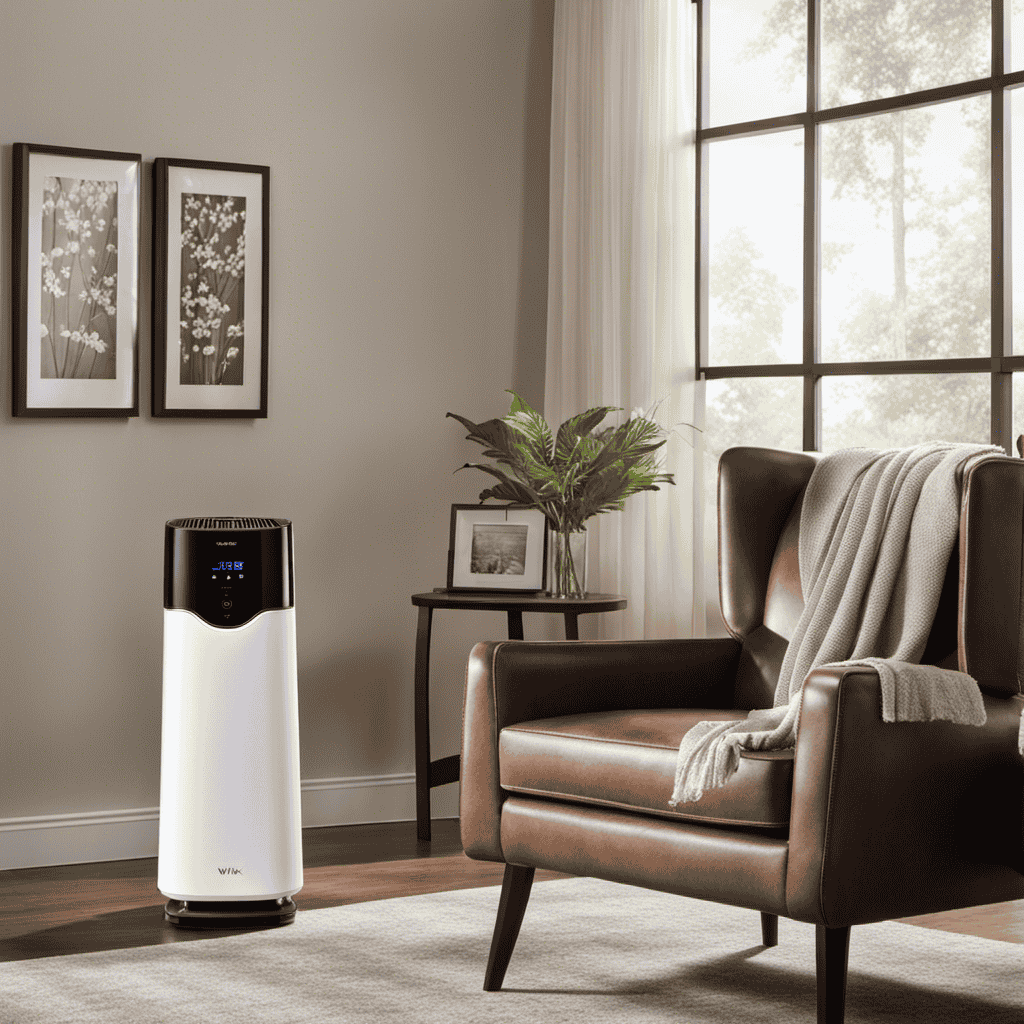
When I opened my new Winix Plasmawave Air Purifier, I was filled with excitement. The simple setup and easy-to-use control panel helped me grasp the device’s capabilities quickly.
Adjusting the air purification settings was a breeze, and with regular cleaning and maintenance, I knew I could rely on this purifier for optimal performance.
Join me as I share my troubleshooting tips and reveal the secrets to unlocking the full potential of the Winix Plasmawave Air Purifier.
Key Takeaways
- The unboxing process is straightforward and hassle-free, with clear instructions provided in the user manual.
- The control panel and remote control offer easy access to all the necessary features and settings for effective operation.
- Regular maintenance, including filter replacement and cleaning, is crucial for optimal performance and longevity of the air purifier.
- Troubleshooting techniques can help resolve common issues and ensure the air purifier’s maximum effectiveness in improving indoor air quality.
Unboxing and Setup
Let’s start by unboxing and setting up the Winix PlasmaWave air purifier.
The unboxing process was straightforward and hassle-free. Inside the box, I found the air purifier unit, filters, and a user manual.
I began by removing all the protective packaging from the unit. Then, I carefully installed the filters into their designated slots. The unit has a pre-filter, a carbon filter, and a True HEPA filter, which work together to capture and eliminate various pollutants.
Once the filters were securely in place, I plugged in the air purifier and turned it on. The setup instructions provided clear step-by-step guidance on how to adjust the settings and customize the air purifier’s performance to my liking.
Overall, the unboxing and setup process was simple, making it easy for me to start using the Winix PlasmaWave air purifier right away.
Understanding the Control Panel
The control panel on this device provides all the necessary information to operate it effectively. It is designed to be user-friendly, with intuitive buttons and clear labels. Here are some key features of the control panel:
- Power Button: This is the main button to turn the air purifier on and off.
- Fan Speed: You can adjust the fan speed to your preference, choosing from low, medium, or high.
- PlasmaWave Button: This feature helps to neutralize viruses, bacteria, and other pollutants in the air.
- Timer: You can set a timer to automatically turn off the air purifier after a certain period of time.
- Filter Reset Indicator: This light will illuminate when it’s time to replace the filters.
Using the remote control, you can conveniently access all these features from a distance. It allows you to adjust settings, turn on/off the air purifier, and even set a timer without having to walk up to the control panel.
For more detailed instructions on how to replace the filters, refer to the filter replacement guide provided with the air purifier. It gives step-by-step instructions and helpful tips to ensure proper maintenance of your device.
Adjusting Air Purification Settings
To adjust the settings on this device, simply press the buttons on the control panel or use the remote control.
The Winix PlasmaWave air purifier offers numerous air purification benefits, which in turn provide significant health benefits. By adjusting the settings, you can customize the air purification process to suit your specific needs.
For instance, you can select the fan speed to control the airflow and adjust the intensity of the purification process. Additionally, you can choose between different modes, such as Auto, Sleep, or Turbo, depending on the level of air purification required.
These settings allow you to optimize the efficiency of the air purifier, ensuring that it effectively removes pollutants, allergens, and other harmful particles from the air, resulting in cleaner and healthier indoor air for you and your family.
Cleaning and Maintenance Tips
When cleaning and maintaining this device, remember to regularly change the filters and wipe down the exterior with a damp cloth. It is important to follow a maintenance schedule to ensure optimal performance of your Winix PlasmaWave air purifier.
Here are some cleaning and maintenance tips to keep in mind:
-
Filter Replacement:
-
Replace the pre-filter every 3 months or as needed to remove larger particles like dust and pet hair.
-
The True HEPA filter should be replaced every 12 months to effectively capture allergens and pollutants.
-
Exterior Cleaning:
-
Use a soft, damp cloth to wipe down the exterior of the air purifier regularly to remove dust and dirt.
-
Avoid using harsh chemicals or abrasive materials that could damage the device.
Troubleshooting and Tips for Optimal Performance
For optimal performance, make sure you clean the filters regularly and avoid using harsh chemicals on the exterior.
When it comes to troubleshooting techniques for your Winix PlasmaWave air purifier, there are a few things you can try.
If the unit is not turning on, check if it is properly plugged into a power source. If it still doesn’t work, try resetting it by unplugging it for a few minutes and then plugging it back in.
If you notice a decrease in airflow, it could be due to a clogged filter. In this case, remove the filter and clean it according to the manufacturer’s instructions.
Lastly, to improve indoor air quality, consider placing the air purifier in a central location and running it on a higher fan speed for maximum effectiveness.
Frequently Asked Questions
Can the Winix Plasmawave Air Purifier Remove Pet Dander and Allergens From the Air?
Yes, the Winix Plasmawave Air Purifier effectively removes pet dander and allergens from the air. It’s been a great help in relieving my allergies and keeping the air clean and fresh.
How Often Should I Replace the Filters in the Winix Plasmawave Air Purifier?
I replace the filters in my Winix Plasmawave air purifier every 6-12 months. Replacement filters can be purchased online or at stores that sell air purifiers and filters.
Can I Use the Air Purifier in a Large Room or Open Floor Plan?
In a large room or open floor plan, the Winix Plasmawave Air Purifier can effectively clean the air. Its powerful filtration system and wide coverage area make it suitable for these spaces.
Does the Winix Plasmawave Air Purifier Emit Any Harmful Gases or Chemicals Into the Air?
No, the Winix Plasmawave Air Purifier does not emit any harmful gases or chemicals into the air. It has been thoroughly tested and proven to be safe for use.
Can I Leave the Air Purifier on All Day and Night, or Should I Turn It off When Not in Use?
I leave my air purifier on all day and night for continuous purification. It’s designed for 24/7 usage, so there’s no need to turn it off when not in use. This ensures clean air throughout my home.
Can the Winix Plasmawave Air Purifier Help with Common Air Quality Issues?
Looking for a solution to common air quality issues? The Winix Plasmawave air purifier, as recommended in the “air purifier necessity guide,” effectively removes allergens, dust, and odors from the air. With its advanced technology, this air purifier can greatly improve the air quality in your home or office.
Conclusion
In conclusion, the Winix PlasmaWave air purifier has proven to be a breath of fresh air in my home.
Its unboxing and setup process was like unwrapping a gift from the heavens, and understanding the control panel was as simple as deciphering a secret code.
Adjusting the air purification settings felt like harnessing the power of the wind itself, while cleaning and maintenance tips kept my purifier running smoothly like a well-oiled machine.
Troubleshooting and maximizing performance felt like unlocking the secrets of the universe.
With this purifier, my home has become an oasis of clean, fresh air.
At Aero Guardians, where every piece of information aims to make the world a breath fresher, Samuela’s role as an author has been nothing short of transformative. With a penchant for weaving stories around the science of air purification, Samuela has enriched the platform with content that is both enlightening and captivating.
Air Purifier Guides
How to Use Ozone Air Purifier
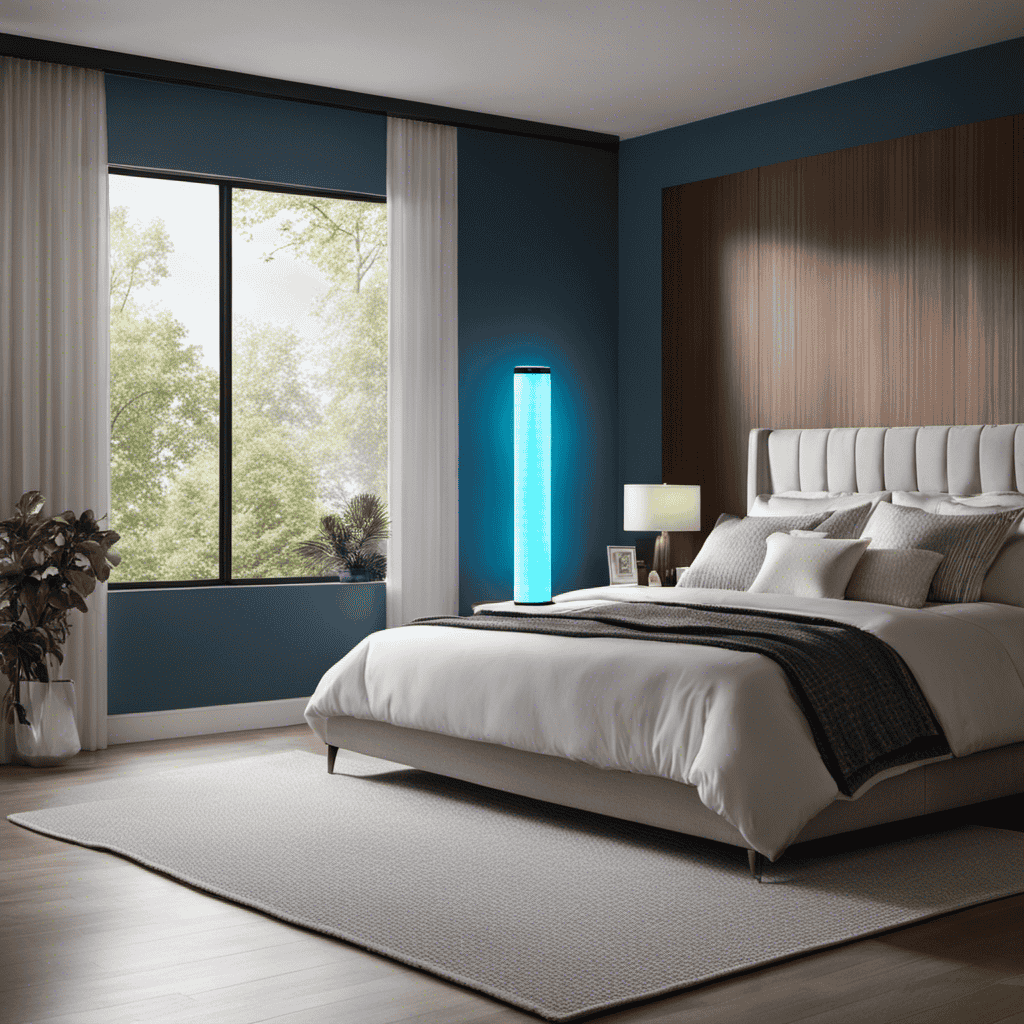
Want to eliminate those irritating allergens and odors in your home? Then check out the ozone air purifier!
In this article, I’ll guide you through the ins and outs of using this powerful device.
From understanding the basics to choosing the right purifier for your needs, we’ll cover it all.
Get ready to breathe in cleaner, fresher air as we delve into the world of ozone air purifiers.
Key Takeaways
- Ozone air purifiers remove pollutants and odors by producing ozone.
- High levels of ozone can be harmful to humans, pets, and plants.
- Choose an ozone air purifier appropriate for the room size to avoid health risks.
- Regularly clean and maintain the ozone air purifier for optimal performance.
Understanding the Basics of Ozone Air Purifiers
To understand the basics of ozone air purifiers, you need to know how they work and their potential benefits.
Ozone air purifiers are designed to remove pollutants and odors from the air by producing ozone, a molecule made up of three oxygen atoms. When ozone is released into the air, it reacts with airborne contaminants, such as bacteria, viruses, and mold, breaking them down and neutralizing their harmful effects. This process effectively purifies the air and eliminates unpleasant smells.
The benefits of using ozone air purifiers include improved indoor air quality, reduced allergy symptoms, and elimination of airborne pathogens. However, it is important to take precautions when using ozone air purifiers, as high levels of ozone can be harmful to humans, pets, and plants.
It is recommended to follow the manufacturer’s instructions and use ozone air purifiers in well-ventilated areas. Understanding the benefits and precautions of ozone air purifiers is essential in choosing the right one for your needs.
Choosing the Right Ozone Air Purifier for Your Needs
When selecting the right ozone air purifier for your needs, consider the size of the room you want to purify. Ozone air purifiers work by releasing ozone molecules into the air, which can help eliminate odors and kill bacteria and viruses.
However, it’s important to note that ozone can be harmful to humans and pets if inhaled in high concentrations. Therefore, it’s crucial to choose an ozone air purifier that is appropriate for the size of your room to avoid potential health risks.
A good buying guide is to look for the recommended room size on the product’s packaging or specifications. This will ensure that the ozone concentration remains within safe levels and effectively purifies the air without compromising your health.
Setting Up Your Ozone Air Purifier Correctly
Make sure you position the ozone air purifier in a central location within the room for optimal air circulation. This is an important step in the installation process to ensure that the purifier can effectively clean the air in the entire room.
Additionally, it is recommended to place the purifier at least three feet away from walls or furniture to allow for proper airflow.
When troubleshooting common issues with your ozone air purifier, there are a few things to keep in mind. First, make sure that the purifier is plugged in and turned on. Check the power supply and ensure that it is functioning properly. If the purifier is not producing ozone or there is a strange odor, check the plates or filters for any dirt or debris that may be affecting the performance.
By setting up your ozone air purifier correctly and addressing any troubleshooting issues, you can ensure that it operates safely and effectively in your home or office.
Now, let’s move on to the next section on how to operate your ozone air purifier.
Operating Your Ozone Air Purifier Safely and Effectively
Ensure that you follow the safety guidelines and operate your ozone air purifier correctly for optimal results. It is important to address common misconceptions and potential health risks associated with ozone air purifiers. While ozone can effectively remove odors and kill bacteria, it can also be harmful if not used properly. To operate your ozone air purifier safely, make sure to keep the room well-ventilated and follow the manufacturer’s instructions for ozone output levels and exposure times. Avoid using ozone air purifiers in occupied spaces, as high levels of ozone can irritate the respiratory system and worsen existing respiratory conditions. It is also crucial to periodically check the ozone levels in the room using an ozone monitor. By taking these precautions, you can enjoy the benefits of an ozone air purifier while minimizing potential health risks.
| Common Misconceptions | Potential Health Risks |
|---|---|
| Ozone air purifiers are | High ozone levels can irritate the |
| completely safe to use. | respiratory system and worsen |
| existing respiratory conditions. | |
| Ozone air purifiers only | Prolonged exposure to high levels of |
| remove odors. | ozone can cause lung damage. |
| Ozone air purifiers can | People with asthma, allergies, and |
| improve indoor air | other respiratory conditions are |
| quality. | more sensitive to ozone and should |
| avoid using ozone air purifiers. |
Maintaining and Cleaning Your Ozone Air Purifier
To keep your ozone air purifier working effectively, it’s important to regularly clean and maintain it. By following a recommended maintenance schedule, you can ensure that your purifier continues to provide clean and fresh air for your space.
One common issue that may arise is a decrease in ozone production. This can be caused by a dirty ozone plate or a clogged filter. To troubleshoot this issue, simply remove the ozone plate and clean it with warm soapy water. Additionally, check the filter and clean or replace it if necessary.
It is also important to clean the exterior of the purifier regularly to prevent dust and dirt buildup. By properly maintaining your ozone air purifier, you can extend its lifespan and enjoy the benefits of clean air in your home or office.
Frequently Asked Questions
Can an Ozone Air Purifier Remove Pet Dander and Allergens From the Air?
Yes, an ozone air purifier can remove pet dander and allergens from the air. However, it’s important to note that ozone air purifiers can also pose potential health risks, so proper usage and precautions should be followed.
How Long Does It Take for an Ozone Air Purifier to Eliminate Odors in a Room?
Using an ozone air purifier is effective in eliminating odors in a room. It usually takes a few hours for the ozone to break down and neutralize the odor molecules. Regular maintenance ensures its optimal performance.
Are Ozone Air Purifiers Safe to Use Around Children and Pets?
Ozone air purifiers can be harmful to asthmatic individuals and people with respiratory issues. They can also be detrimental to plants and indoor gardens. It’s important to consider these factors before using them.
Can an Ozone Air Purifier Eliminate Mold and Mildew in a Damp Environment?
An ozone air purifier can effectively eliminate mold and mildew in a damp environment. By producing ozone, it eliminates moisture and prevents mold growth. Regular use in such environments can help maintain a clean and healthy space.
Do Ozone Air Purifiers Require Regular Filter Replacements Like Traditional Air Purifiers?
Ozone air purifiers have the advantage of not requiring regular filter replacements like traditional air purifiers. However, it is important to maintain them properly by cleaning the ozone plates regularly to ensure efficient operation.
Can I Use an Ionic Air Purifier in the Same Way as an Ozone Air Purifier?
Yes, you can use an ionic air purifier in the same way as an ozone air purifier. Both work by creating an ionic air purifier that emits negatively charged ions to remove particles from the air. However, it’s important to note that ozone air purifiers also emit ozone, which can be harmful in high concentrations.
Conclusion
So there you have it, a comprehensive guide on how to use an ozone air purifier.
While some may argue that ozone air purifiers can be harmful and should be avoided, it is important to note that when used correctly and in moderation, they can provide effective air purification.
By understanding the basics, choosing the right purifier, setting it up correctly, operating it safely, and maintaining it regularly, you can enjoy clean and fresh air in your home.
Remember, it’s all about finding the right balance and taking the necessary precautions.
In the dynamic world of air purifiers and clean air advocacy, Aire stands out as a beacon of knowledge and passion. As the Editor in Chief of Aero Guardians, Aire has been instrumental in shaping the platform’s voice and direction, ensuring that every piece of content resonates with clarity, authority, and authenticity.
Air Purifier Guides
How to Use the Air Purifier
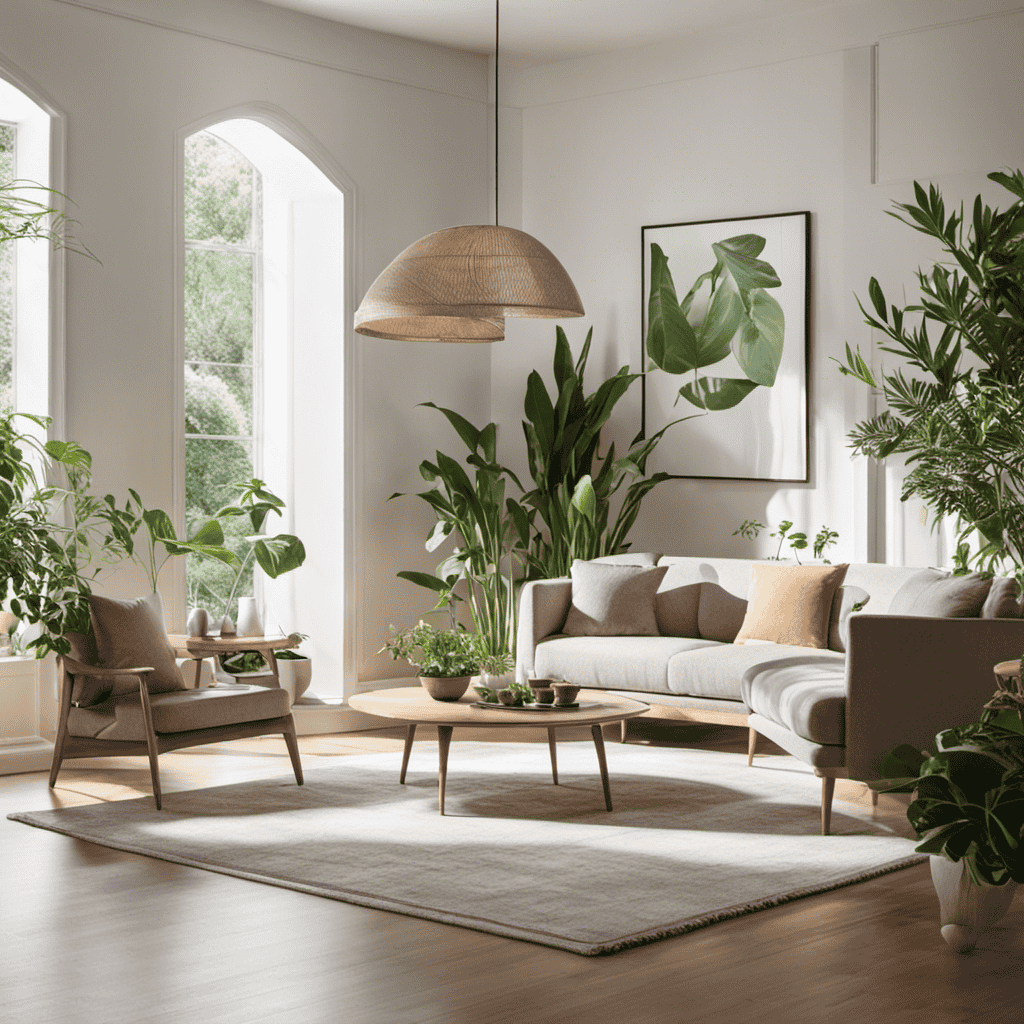
Using an air purifier is comparable to having a personal protector for your indoor air quality. It is a straightforward but efficient method to eliminate pollutants and allergens from your home, guaranteeing you inhale clean and fresh air.
In this article, I will guide you through the process of using an air purifier, from understanding its features to cleaning and maintaining it. With this knowledge, you’ll be able to optimize the performance of your air purifier and enjoy a healthier living environment.
Key Takeaways
- Air purifiers remove harmful particles and pollutants from the air.
- Regular maintenance, including cleaning or replacing filters, is essential for optimal performance.
- Placement and location of the air purifier can affect its effectiveness.
- Customizing and optimizing usage, such as adjusting fan speed and setting specific hours of operation, can maximize efficiency and air purification results.
Understanding the Air Purifier’s Features
Now let’s take a look at the air purifier’s features and how they can improve the air quality in your home.
Air purifiers are designed to remove harmful particles and pollutants from the air, ensuring a clean and healthy living environment. One of the key features of an air purifier is its filtration system. This system consists of different filters that capture dust, pet dander, pollen, and other allergens.
Regular air purifier maintenance is essential to ensure optimal performance. Cleaning or replacing the filters as recommended by the manufacturer will help maintain the air purifier’s effectiveness.
The benefits of air purification are numerous. By removing pollutants from the air, air purifiers can alleviate allergies, reduce asthma symptoms, and improve overall respiratory health. Additionally, they can eliminate unpleasant odors and create a fresh and inviting atmosphere in your home.
Setting Up Your Air Purifier
To begin setting up your air purifier, you’ll need to plug it into an electrical outlet. Once you’ve done that, there are a few more steps to take to ensure optimal performance.
One important factor to consider is choosing the right size air purifier for your space. A small purifier may not be effective in a large room, while a large purifier may be unnecessary for a small space. Refer to the manufacturer’s guidelines or consult with a professional to determine the appropriate size for your needs.
Additionally, regular maintenance is crucial to keep your air purifier running efficiently. Here are some maintenance tips to keep in mind:
-
Clean or replace the filters regularly: Depending on the model, filters may need to be cleaned or replaced every few months. This ensures that the purifier can effectively remove pollutants from the air.
-
Vacuum the exterior: Dust and debris can accumulate on the outside of the purifier, hindering its performance. Regularly vacuuming the exterior helps to maintain its effectiveness.
-
Check the fan and motor: Ensure that the fan and motor are clean and free from obstructions. This helps to prevent overheating and prolongs the lifespan of the purifier.
-
Follow the manufacturer’s instructions: Different air purifiers may have specific maintenance requirements. Always refer to the manufacturer’s instructions for proper care and maintenance.
Choosing the Right Location
When it comes to choosing the right location for your air purifier, there are a few key factors to consider.
First, you want to ensure optimal placement for maximum effectiveness. This means placing the purifier in a central location in the room, away from walls and furniture that could obstruct air circulation.
Additionally, factors such as room size, airflow patterns, and the presence of obstacles can all affect the overall air circulation in the space.
Optimal Placement for Effectiveness
For best results, it’s important to place the air purifier in a central location within the room. By doing so, you can maximize its effectiveness in optimizing air quality. The central placement allows the purifier to circulate the air more efficiently, ensuring that all corners of the room are covered.
Avoid placing the purifier near walls or furniture that could obstruct the airflow. It’s also crucial to position the purifier at a suitable height, ideally at the same level as your breathing zone. This ensures that the purifier captures the airborne pollutants effectively.
Additionally, keep in mind that the purifier should be placed away from any potential sources of contamination, such as smoking areas or chemical storage. Taking these steps will help you achieve the best possible air purification results.
Factors Affecting Air Circulation
Positioning the air purifier in a central location within the room allows it to circulate the air more efficiently and optimize air quality. To further enhance the effectiveness of the air purifier, there are two key factors to consider: airflow control and humidity levels.
Airflow Control: Ensuring proper airflow is crucial for the air purifier to work optimally. Avoid placing the purifier near walls, furniture, or curtains that can obstruct the airflow. Position it in an open area, away from any potential obstructions, to allow the purified air to circulate freely throughout the room.
Humidity Levels: Maintaining the right humidity levels is essential for a healthy indoor environment. High humidity can promote the growth of mold and mildew, while low humidity can cause dryness and discomfort. Some air purifiers come with built-in humidifiers, allowing you to control both air quality and humidity levels simultaneously.
Installing the Filters
To install the filters, you’ll need to locate the filter compartment on the side of the air purifier. It’s a crucial step in maintaining the effectiveness of your air purifier.
When installing replacement filters, make sure to read the manufacturer’s instructions carefully. Start by switching off the power and unplugging the device for safety.
Open the filter compartment by releasing the latch or removing the cover. Take out the old filters and dispose of them properly. It’s important to remove any dust or debris that may have accumulated in the compartment before inserting the new filters.
Slide the new filters into place, making sure they fit securely. Finally, close the compartment and plug in your air purifier.
Enjoy cleaner, fresher air once again!
Powering On and Off
When it comes to powering on and off your air purifier, it’s important to understand proper power usage and how to troubleshoot any power issues that may arise.
Proper power usage involves following the manufacturer’s instructions for plugging in and turning on the device, as well as using the correct voltage and outlet.
If you encounter any power issues, such as the air purifier not turning on or suddenly shutting off, troubleshooting steps may include checking the power cord for any damage, ensuring the outlet is functioning properly, and consulting the user manual for specific troubleshooting tips.
Proper Power Usage
Make sure you’re using the correct voltage for the air purifier to prevent any potential damage. Using the wrong voltage can lead to overheating or even a complete malfunction of the device.
To ensure power saving and energy efficiency, here are three important points to consider:
-
Opt for an air purifier with adjustable power settings. This allows you to customize the energy consumption based on your needs. Lower power settings are ideal for maintaining air quality while minimizing energy usage.
-
Look for air purifiers with energy-saving features such as automatic shut-off timers or sleep mode. These features allow the device to operate only when necessary, reducing power consumption and extending the lifespan of the purifier.
-
Consider investing in an air purifier with a high CADR (Clean Air Delivery Rate) and Energy Star certification. These ratings indicate that the purifier meets strict energy efficiency standards while still effectively cleaning the air in your space.
Troubleshooting Power Issues
If your device is not turning on, it may be due to a power issue.
When it comes to fixing malfunctions, the first thing you should do is check the power source. Ensure that the air purifier is properly plugged into a working electrical outlet. Sometimes, the power cord may be loose or damaged, so make sure it is securely connected to both the device and the outlet.
If the power source seems fine, you can try resetting the air purifier by unplugging it for a few minutes and then plugging it back in. Additionally, check if there is a power switch or button that needs to be turned on for the device to function.
Adjusting the Fan Speed
To adjust the fan speed on your air purifier, simply locate the control panel and press the corresponding button. Here’s how you can increase airflow and adjust the fan settings:
-
Press the ‘Fan Speed’ button on the control panel. This button may be labeled with icons representing different fan speeds, such as low, medium, and high.
-
Use the up or down arrows on the control panel to cycle through the available fan speed options. Each press of the arrow will adjust the speed incrementally.
-
Once you’ve selected the desired fan speed, press the ‘OK’ or ‘Enter’ button to confirm your choice.
By adjusting the fan speed, you can customize the airflow of your air purifier to suit your preferences.
Now, let’s move on to exploring the timer function and how it can enhance your experience with the air purifier.
Using the Timer Function
Using the timer function on your air purifier can offer several benefits and allow for efficient usage.
By setting the timer, you can customize the purifying schedule to fit your needs and ensure the air in your space is constantly fresh and clean.
Additionally, understanding the different settings available on the timer can help maximize the effectiveness of your air purifier and make it even more convenient to use.
Timer Benefits and Settings
The timer on the air purifier allows me to easily control when it turns on and off. Here are the benefits of using a timer on my air purifier:
-
Energy Efficiency: By setting the timer, I can ensure that the air purifier only operates when I need it the most. This not only saves energy but also reduces the electricity bill.
-
Noise Reduction: Having the air purifier running all the time can be noisy, especially when I’m trying to sleep or relax. With the timer, I can set it to turn off during those times, providing me with a quiet environment.
-
Customizable Duration: The timer allows me to set the duration for which I want the air purifier to run. Whether it’s for a few hours or the entire night, I can adjust the timer according to my specific needs.
Setting the timer duration is a simple process. I just need to press the timer button and use the controls to set the desired time. Once set, the air purifier will automatically turn on and off at the specified times, providing me with clean and fresh air whenever I need it.
Efficient Usage Tips
Maximize the efficiency of your air purifier by adjusting the settings according to your specific needs and preferences. To help you achieve the best air quality possible, here are some efficient usage tips:
-
Choose the right fan speed: Adjust the fan speed based on the air pollution level. Higher speeds are suitable for heavy pollution, while lower speeds work well for maintaining clean air.
-
Position it strategically: Place your air purifier in a central location to allow for optimal air circulation throughout the room.
-
Regularly clean or replace filters: Clean or replace filters as recommended by the manufacturer. This ensures that the air purifier functions at its highest efficiency.
-
Keep doors and windows closed: To prevent outdoor pollutants from entering the room, close doors and windows while the air purifier is in operation.
Customizing Purifying Schedule
Now that you understand how to efficiently use your air purifier, let’s dive into the topic of customizing your purifying schedule.
This feature allows you to automate the purification process according to your specific needs. Here are some ways you can optimize your air purifier’s performance:
-
Customizing timer settings: Most air purifiers come with a built-in timer that allows you to set specific hours of operation. By adjusting the timer settings, you can ensure that your purifier runs when you need it the most, such as during the night when you’re sleeping or during peak pollution hours.
-
Optimizing purification levels: Depending on the air quality in your surroundings, you can adjust the purification levels of your device. If the air quality is poor, you can set the purifier on a higher speed or activate the turbo mode. On the other hand, if the air quality is relatively good, you can lower the purification levels to conserve energy.
-
Creating personalized schedules: Some advanced air purifiers offer the option to create personalized schedules. This means you can set different purification levels and timer settings for different times of the day. For example, you can set the purifier to run at a higher speed during cooking or cleaning activities and lower it during quieter hours.
Understanding the Indicator Lights
To use the air purifier properly, it’s important to understand the indicator lights. These lights provide valuable information about the status and performance of the device.
The meanings of the indicator lights may vary depending on the specific model, but they generally indicate important functions such as power, filter replacement, and air quality. For example, a green light often indicates that the purifier is operating normally, while a red light may indicate a problem that needs attention, such as a clogged filter.
If you encounter any issues with the indicator lights, it’s crucial to consult the user manual for troubleshooting steps. Common problems may include flickering lights, lights that don’t turn on, or lights that stay on even when the device is not in use.
Understanding and troubleshooting indicator light issues will help ensure optimal performance and longevity of your air purifier.
Cleaning and Maintaining the Air Purifier
Make sure you regularly clean and maintain your air purifier to keep it running efficiently. Here are some cleaning techniques and tips to help you maintain your air purifier:
-
Wipe down the exterior: Use a soft, damp cloth to clean the exterior of the air purifier. Avoid using harsh chemicals or abrasive materials that could damage the surface.
-
Clean the filters: Depending on the type of air purifier you have, you may need to clean or replace the filters regularly. Follow the manufacturer’s instructions for cleaning or replacing the filters to maintain optimal performance.
-
Vacuum the vents: Dust and debris can accumulate on the vents of your air purifier, reducing its effectiveness. Use a brush attachment on your vacuum cleaner to gently remove any build-up.
By following these cleaning techniques and regularly replacing the filters, you can ensure that your air purifier continues to provide clean and fresh air for you and your family.
Now, let’s move on to troubleshooting common issues with air purifiers.
Troubleshooting Common Issues
First, check if the power cord is securely plugged in and try resetting the device if you encounter any issues.
When it comes to fixing noise problems with your air purifier, there are a few things you can try.
First, make sure that the air purifier is placed on a stable surface and not touching any walls or furniture. Sometimes, vibrations from nearby objects can cause unnecessary noise.
Additionally, check if the air filter is clean, as a clogged filter can strain the motor and create noise.
If the noise persists, it may be a sign of a mechanical issue, in which case contacting customer support would be recommended.
Addressing air quality concerns involves regularly cleaning and replacing the air filters as instructed by the manufacturer.
It’s also important to keep the air purifier in a well-ventilated area and away from any potential sources of pollutants.
Frequently Asked Questions
How Long Should I Run the Air Purifier Each Day?
I run the air purifier for the recommended duration each day to ensure optimal usage. It helps to maintain clean air and improve indoor air quality, which is important for my health and well-being.
Can I Use the Air Purifier in Multiple Rooms?
Yes, you can use the air purifier in multiple rooms. It’s a great way to improve air quality in your office and enjoy the benefits of cleaner air in your bedrooms.
Can I Use Essential Oils With the Air Purifier?
Using essential oils in an air purifier can have health benefits, but it’s important to use them correctly and safely. I can provide guidance on how to properly incorporate essential oils into your air purifier.
How Often Do I Need to Replace the Filters?
I typically replace the filters in my air purifier every 3-6 months, depending on how dirty they get. It’s important to pay attention to signs of a dirty filter, such as reduced airflow or a musty smell.
Does the Air Purifier Remove Pet Dander and Allergens From the Air?
Yes, the air purifier effectively removes pet dander and allergens from the air. It’s an essential part of air purifier maintenance and offers numerous benefits for pet owners, ensuring cleaner and healthier indoor air quality.
Is the Use of Ozone Air Purifier Similar to Regular Air Purifiers?
Yes, ozone air purifier benefits are similar to regular air purifiers in some ways. Both types remove harmful pollutants from the air, such as dust, pollen, and pet dander. However, ozone air purifiers also have the added benefit of neutralizing odors and killing bacteria and mold spores.
Conclusion
In conclusion, using an air purifier is an essential step in ensuring clean and fresh air in your home. By understanding its features and following the proper setup and maintenance procedures, you can effectively eliminate pollutants and allergens from your indoor environment.
Did you know that according to a study conducted by the Environmental Protection Agency (EPA), indoor air can be two to five times more polluted than outdoor air? Investing in an air purifier can significantly improve the air quality in your home and promote better health for you and your family.
At Aero Guardians, where every piece of information aims to make the world a breath fresher, Samuela’s role as an author has been nothing short of transformative. With a penchant for weaving stories around the science of air purification, Samuela has enriched the platform with content that is both enlightening and captivating.
-
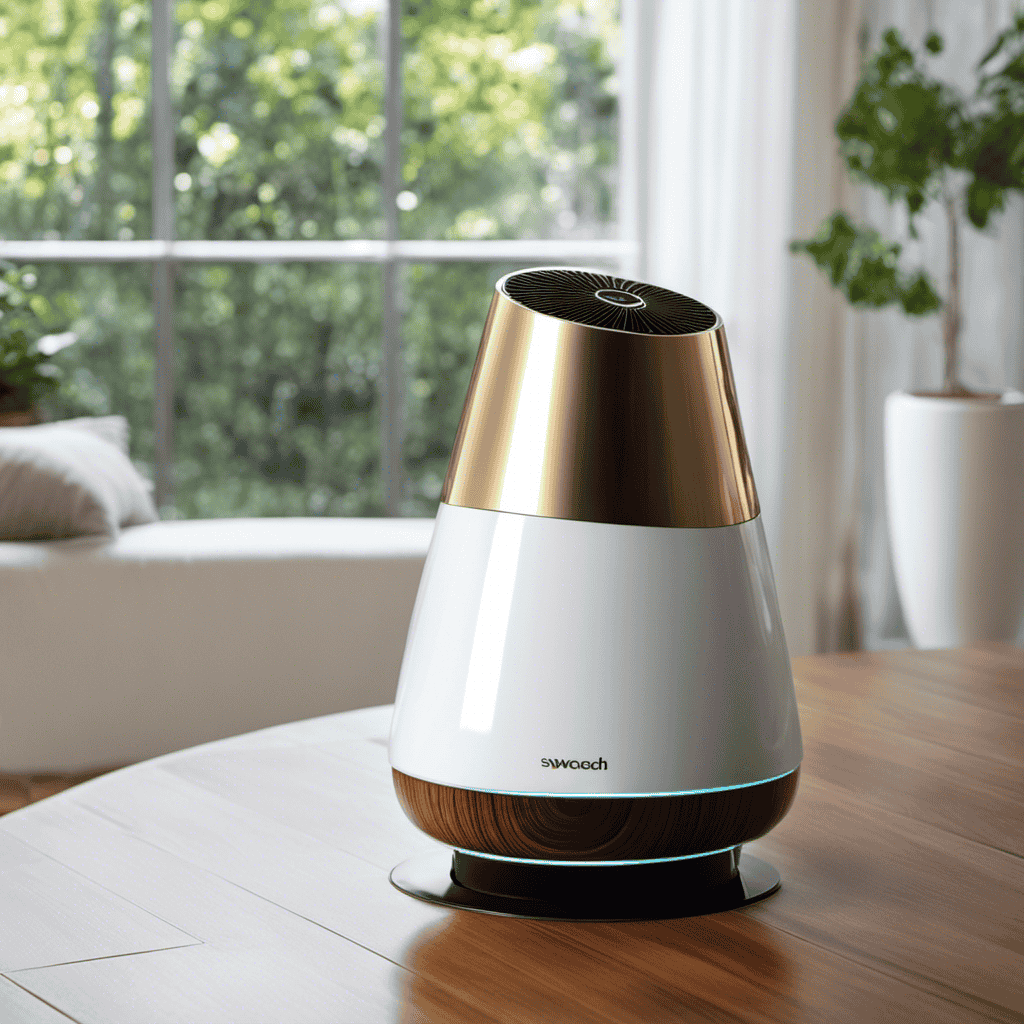
 Types of Air Purifiers4 months ago
Types of Air Purifiers4 months agoWhat Is an Air Purifier
-
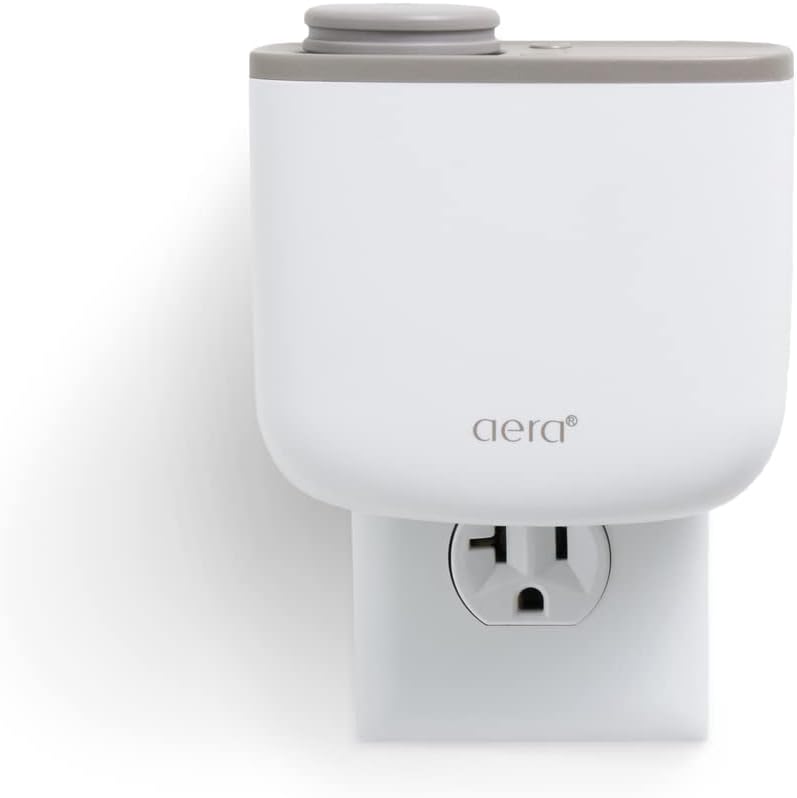
 Vetted2 months ago
Vetted2 months agoAera Mini Review: Smart Home Fragrance Diffuser With Hypoallergenic Scent Technology (2023)
-
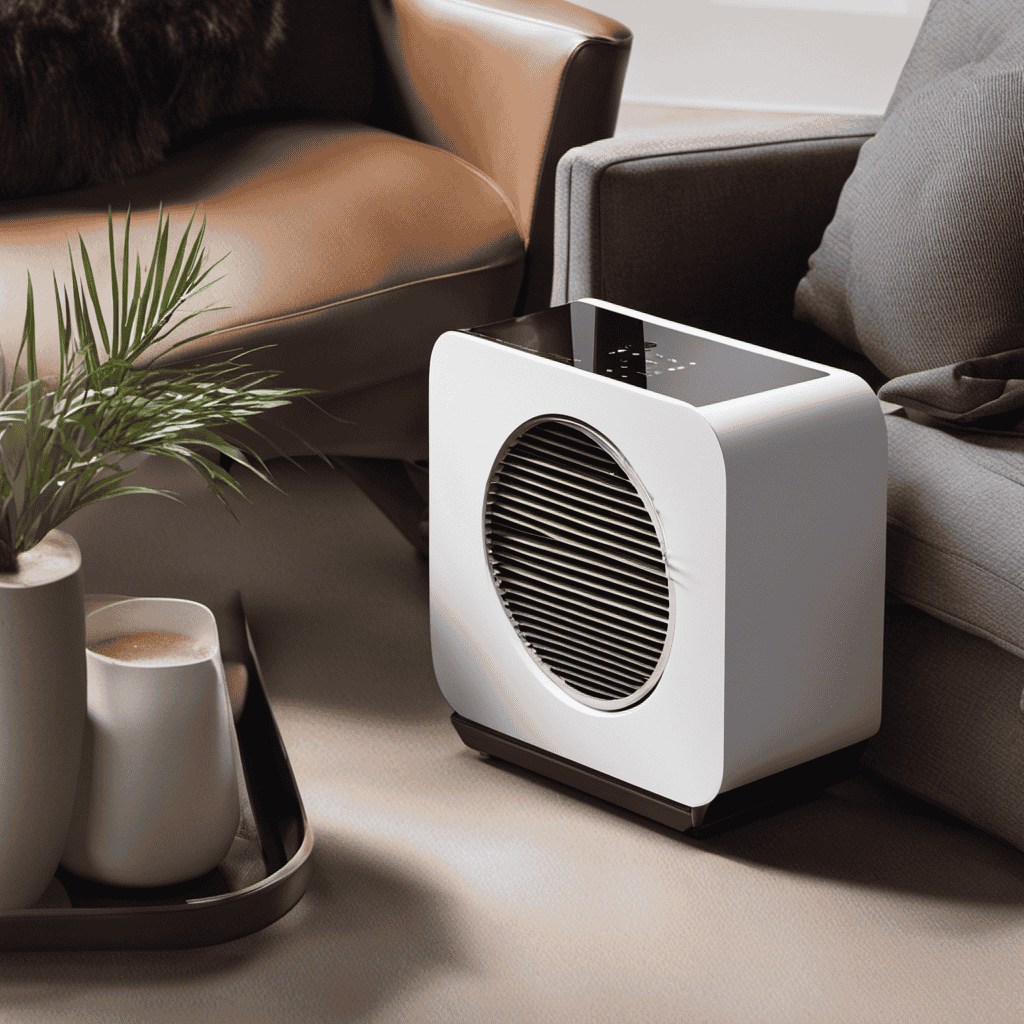
 Air Purifier Guides3 months ago
Air Purifier Guides3 months agoHow to Reset Filter on Miko Air Purifier
-
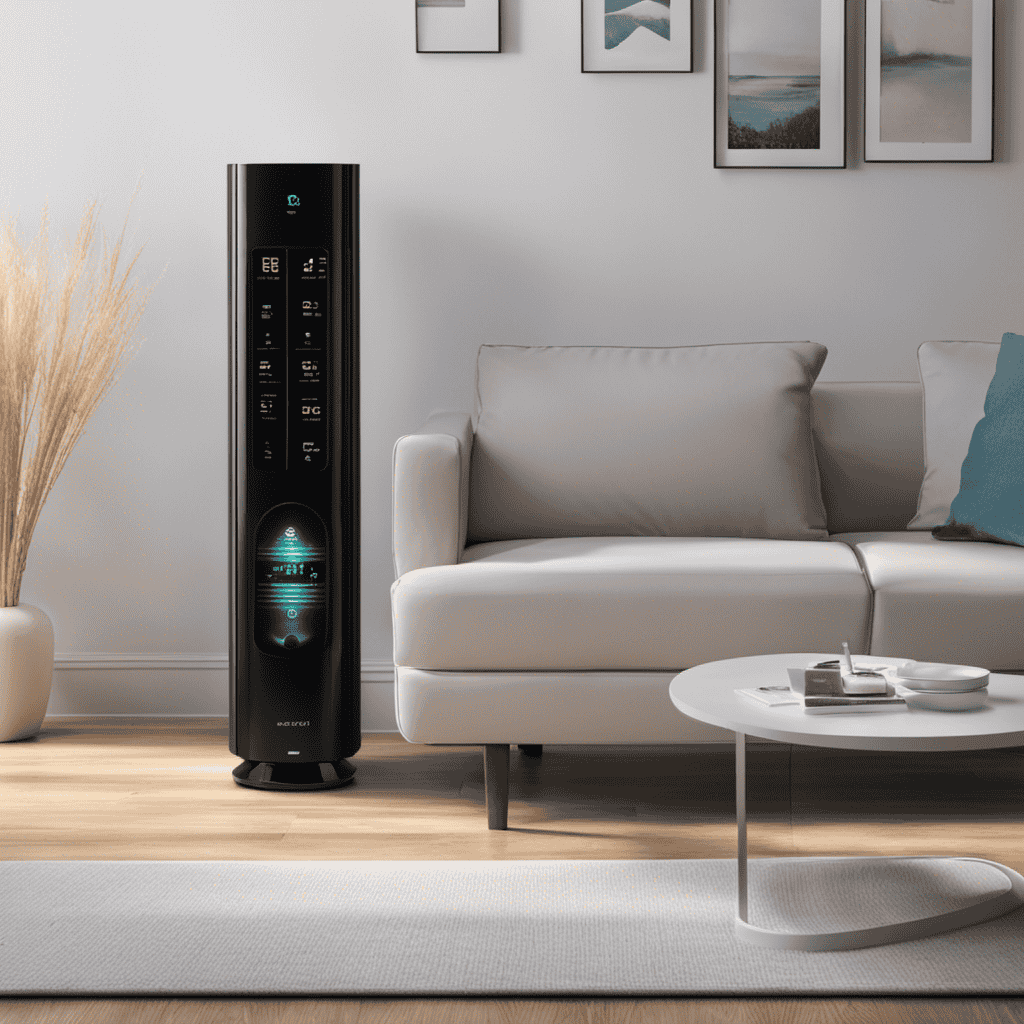
 FAQs - Advanced Queries1 week ago
FAQs - Advanced Queries1 week agoWhat Do the Numbers on My Air Purifier Mean
-
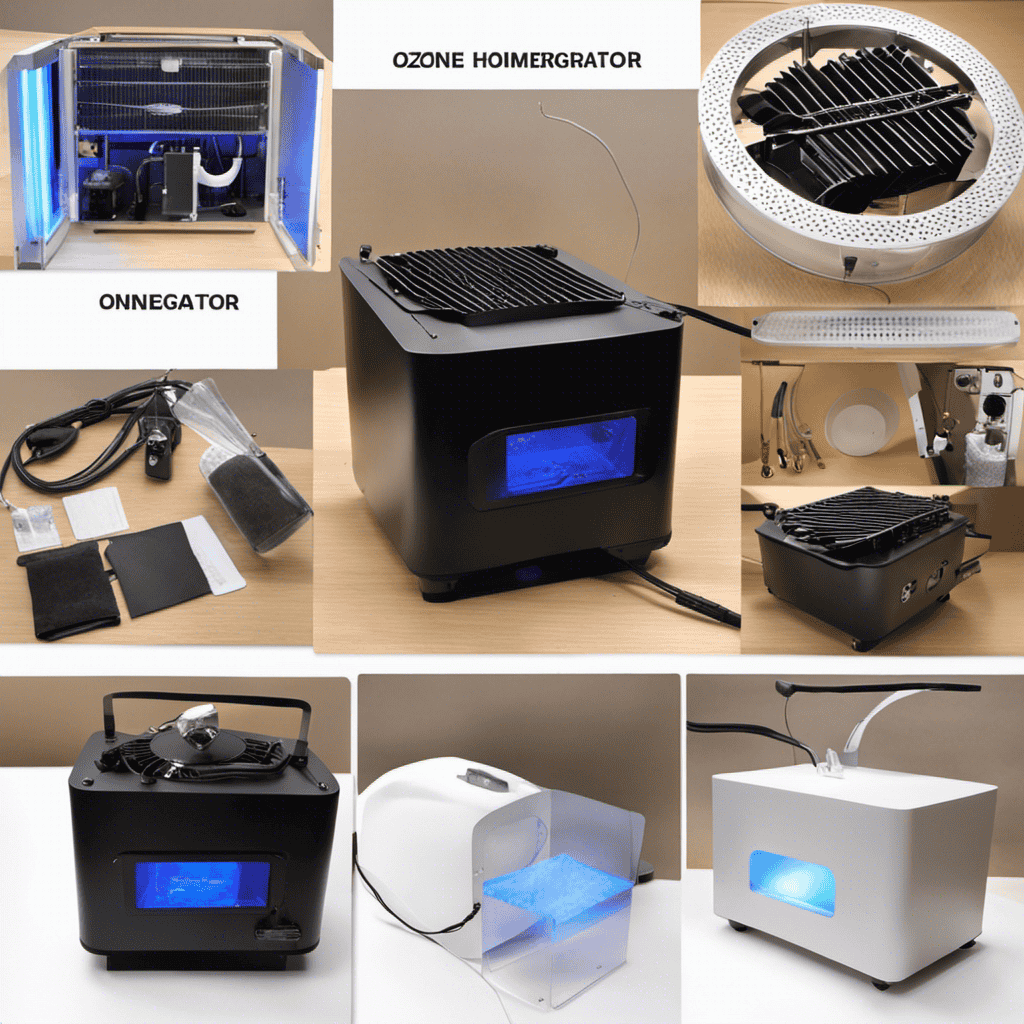
 Air Purifier Guides2 weeks ago
Air Purifier Guides2 weeks agoHow to Make a Homemade Ozone Generator (Air Purifier
-
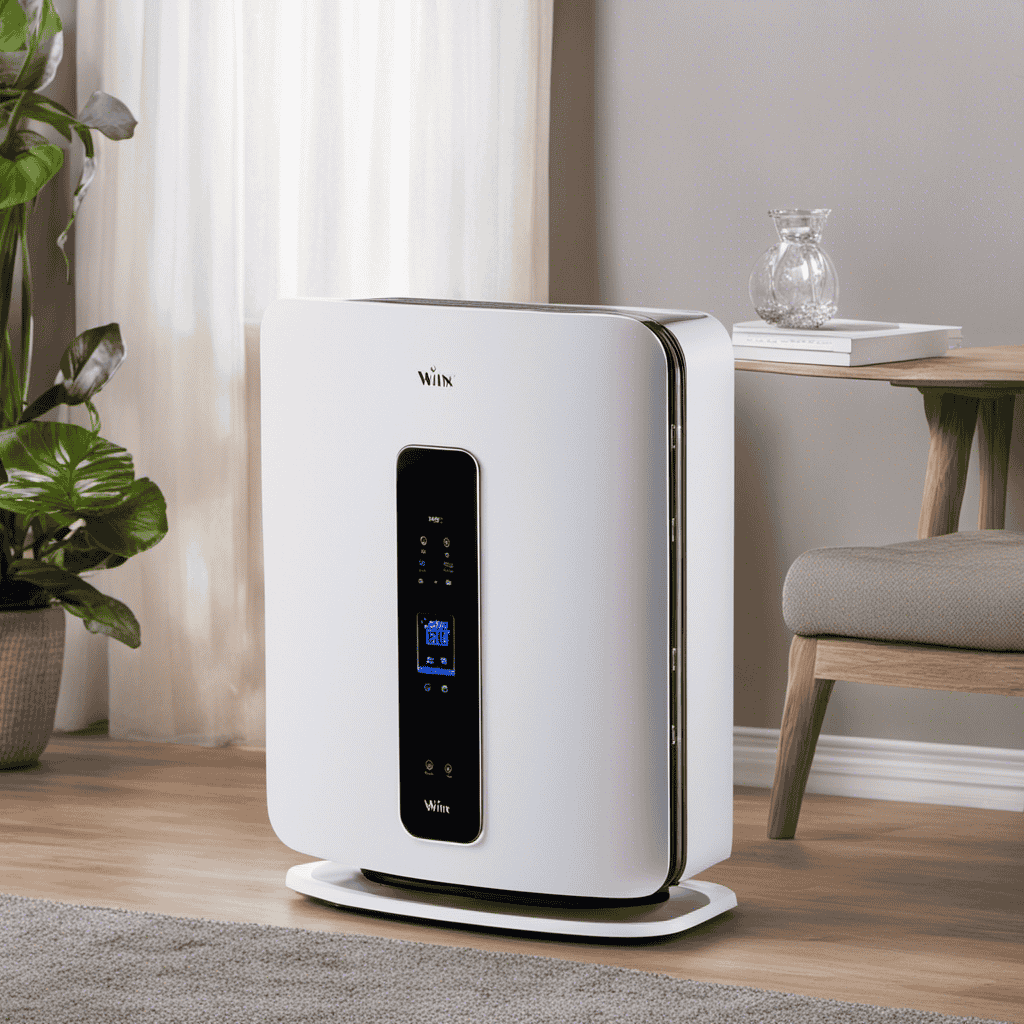
 Maintenance and Tips5 months ago
Maintenance and Tips5 months agoHow to Reset Filter Light on Winix Plasmawave Air Purifier
-

 FAQs - Advanced Queries5 months ago
FAQs - Advanced Queries5 months agoWhen to Use Ionizer on Coway Air Purifier
-

 Air Purifier Guides5 months ago
Air Purifier Guides5 months agoHow to Dispose of Air Purifier Filter Levoit









